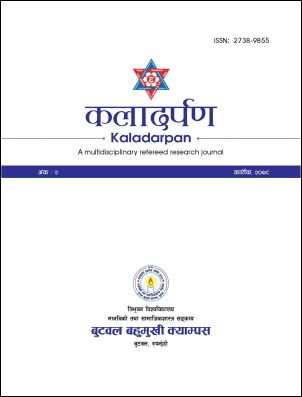Coolie: A Novel on class conflict in capitalist Indian Society
DOI:
https://doi.org/10.3126/kaladarpan.v2i1.50556Keywords:
Capitalism, class conflict, degradation, exploitationAbstract
This paper is trying to focus on the issue of class conflict in capitalist Indian society in different levels. In the capitalist society like that of India the people of working-class were mercilessly exploited. Munoo’s story begins in the village where he had been living with his family, there the rich but greedy landlord of village had seized the small piece of land of Munoo’s father and his father died of broken heart. In Sham Nagar Munoo was exploited by Nathoo Ram who belonged in dominant class. In Daulatpur the plight of coolies on the street and servant’s condition of Prabha’s factory show the gap between haves and haves not. The condition of coolies in Bombay, mill-workers was miserable. Coolies, their wives and children had to sleep on the pavement of the city because they had no living accommodations. The workers were exploited mercilessly in Sir Geroge White’s cotton-mill, they had to live in most unhygienic place. These workers were ill-paid, ill-housed and treated as objects. The capitalists would like to maintain their profits and continue their exploitation to workers. Similarly, Munoo was exploited in Simila by Mrs. Mainwaring sexually and physically. It clears that the exploitation and discrimination of working-class people by capitalists and class struggle between two classes: haves and haves not. The British people were all Englishman occupy top position in India. The upper- class Indian have the link between class of Englishman and lower- class Indian. The upper- class people abused to lower class people, humiliated them for minor faults and sometimes without any reason. The working-class people have lost their sense of self-respect and ready to any length to win favor of British officer especially the upper-class Indian were involved in such practice




